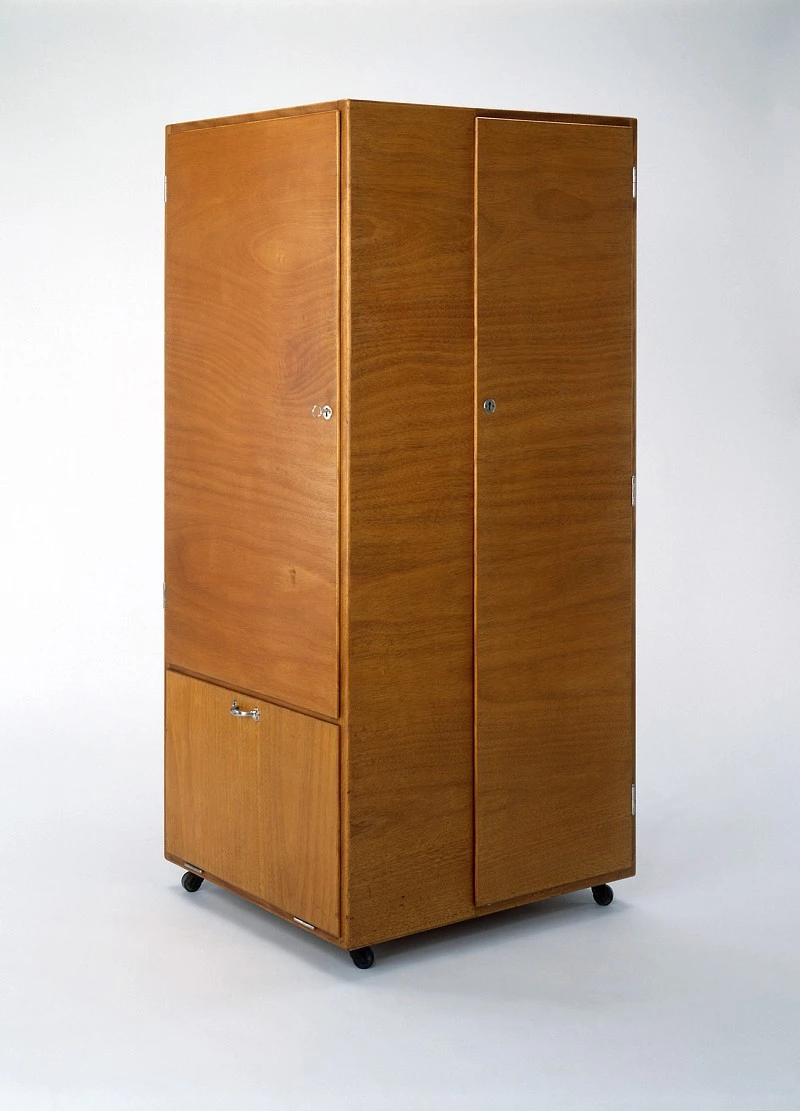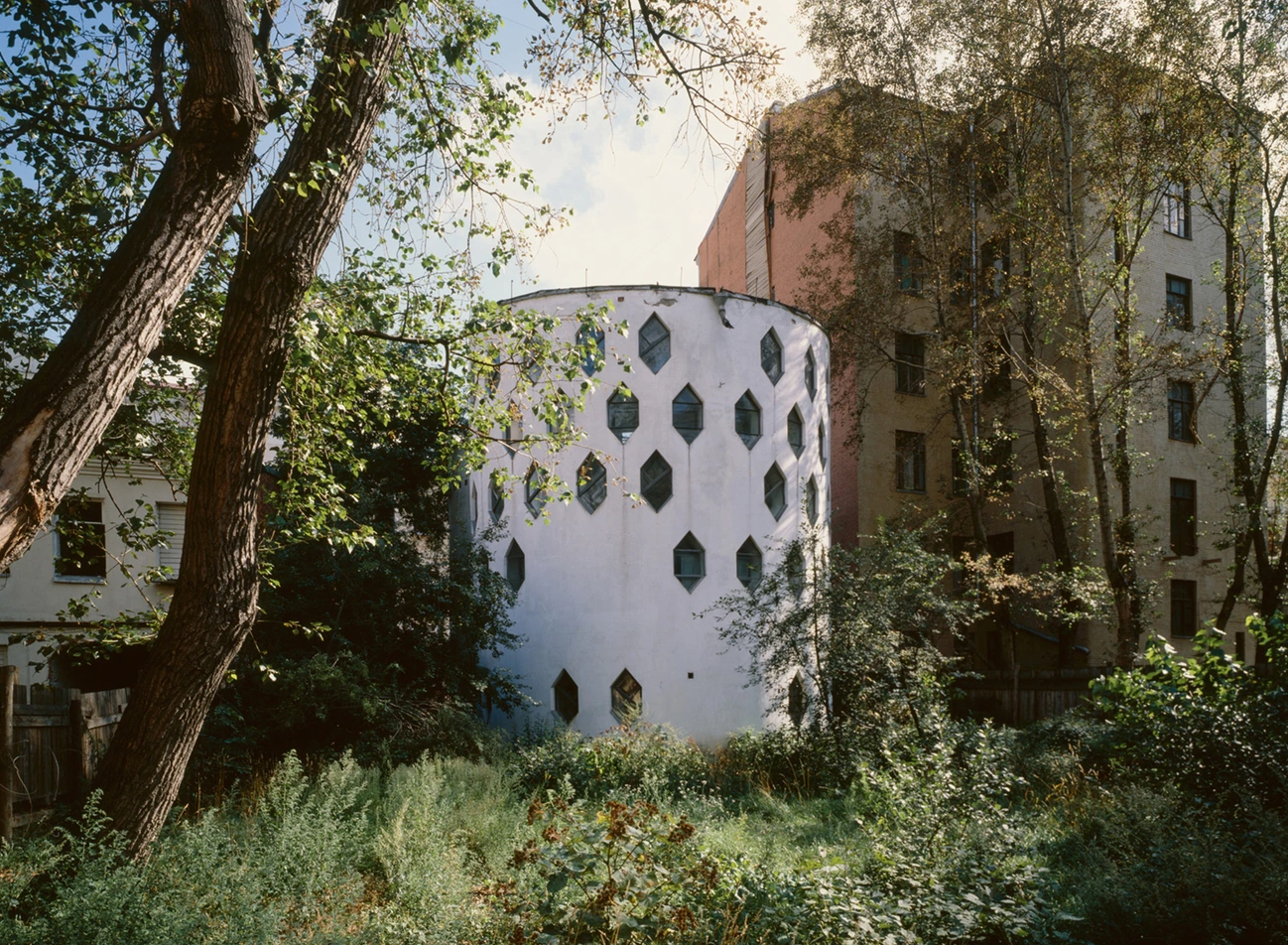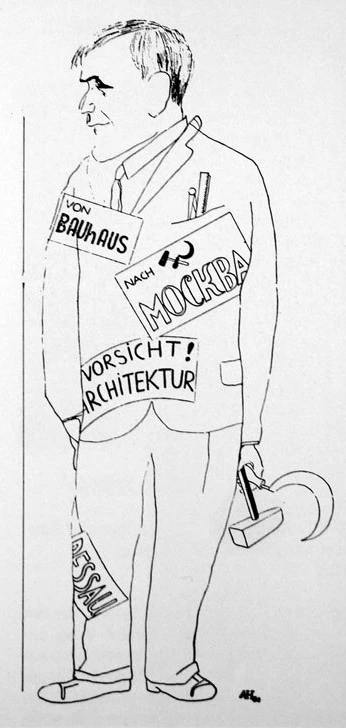o commemorate the school’s 10th anniversary a major Bauhaus exhibition was staged in Zurich. The design projects included furnishings for an average apartment and furniture for defined groups of consumers. The designers, aiming to lower costs, avoided unnecessary details. The designs included folding tables and chairs, as well as a cupboard for a bachelor apartment.

79
Josef Pohl, Bachelor's wardrobe
Meyer organized studio production of standardized products designed to be affordable by all segments of the population. The school’s greatest commercial success is a line of wall-coverings produced in the mural-painting studio. Instead of little flowers the wall-coverings use geometric ornaments suggestive of the structure of cloth. The advantage of the wall-coverings is that the images are small and irregular, making it easy to apply the strips to the wall. Another plus is that small rooms are made to seem larger.






